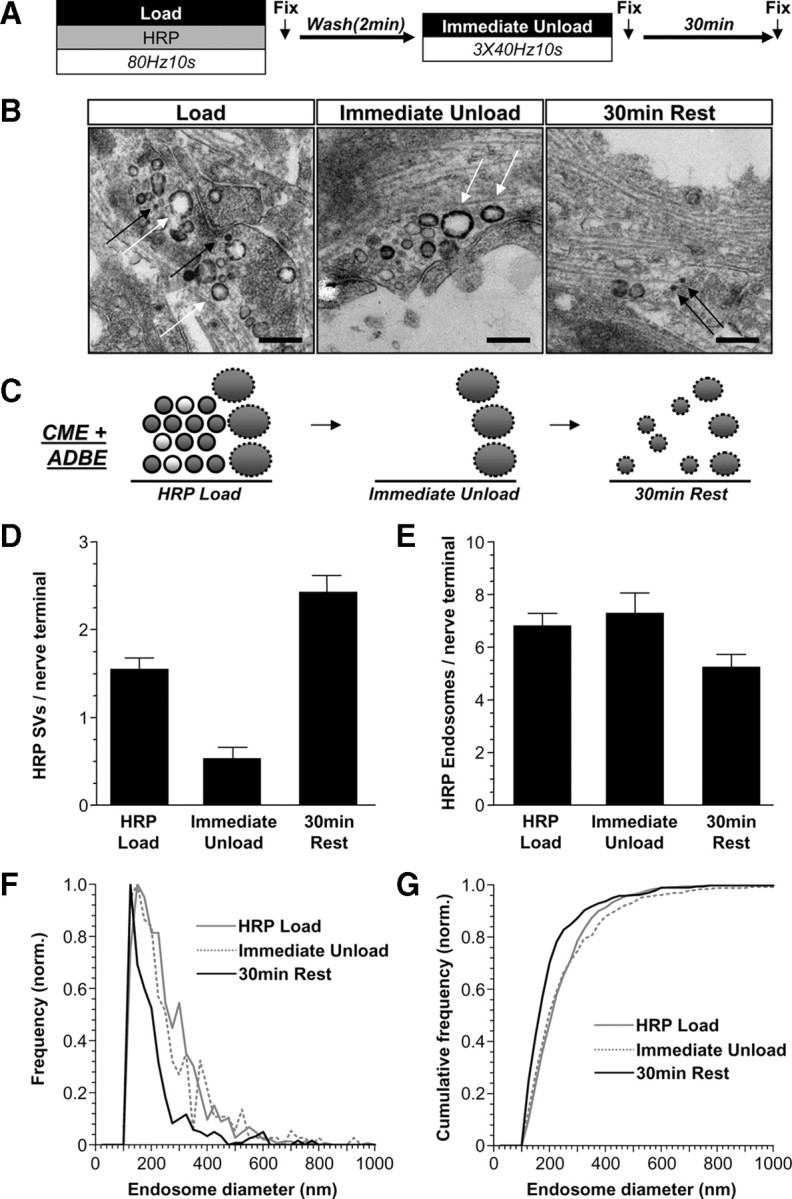Figure 9.

SVs with delayed availability for release are derived from bulk and endosomes. A, Cultures were loaded with HRP (10 mg/ml) using a train of 800 action potentials (80 Hz). HRP was washed away immediately after stimulation, and after 2 min, cultures were stimulated with three consecutive trains of 400 action potentials (40 Hz) to release all available SVs. Cultures were then allowed to rest for 30 min. Cultures were fixed at three time points indicated by arrows and processed for electron microscopy. B, Representative electron micrographs display nerve terminals that were subjected to the treatments described above. Black arrows indicate HRP-labeled SVs; white arrows indicate HRP-labeled endosomes. Scale bar, 500 nm. C, Schematic diagrams illustrating nerve terminals either immediately after HRP loading (HRP load), after depletion of all available SVs (immediate unload), or after 30 min rest. Solid circles represent HRP-loaded SVs, clear circles represent nonloaded SVs. Solid ovals represent HRP-loaded endosomes. Solid outlines represent CME-generated structures, dotted outlines represent ADBE-generated structures. D, E, Mean number of HRP-labeled SVs (D) or endosomes (E) per nerve terminal is displayed for each point (data pooled from 2 independent experiments; HRP load n = 137 nerve terminals, immediate unload n = 36, 30 min rest n = 90; all error bars represent ±SEM). F, G, Endosome diameter was normalized to the total number of endosomes and plotted as frequency (F) and cumulative frequency (G) for each fixation time point (bin size = 25 nm). Only structures with average diameters ≥100 nm were considered endosomes.
